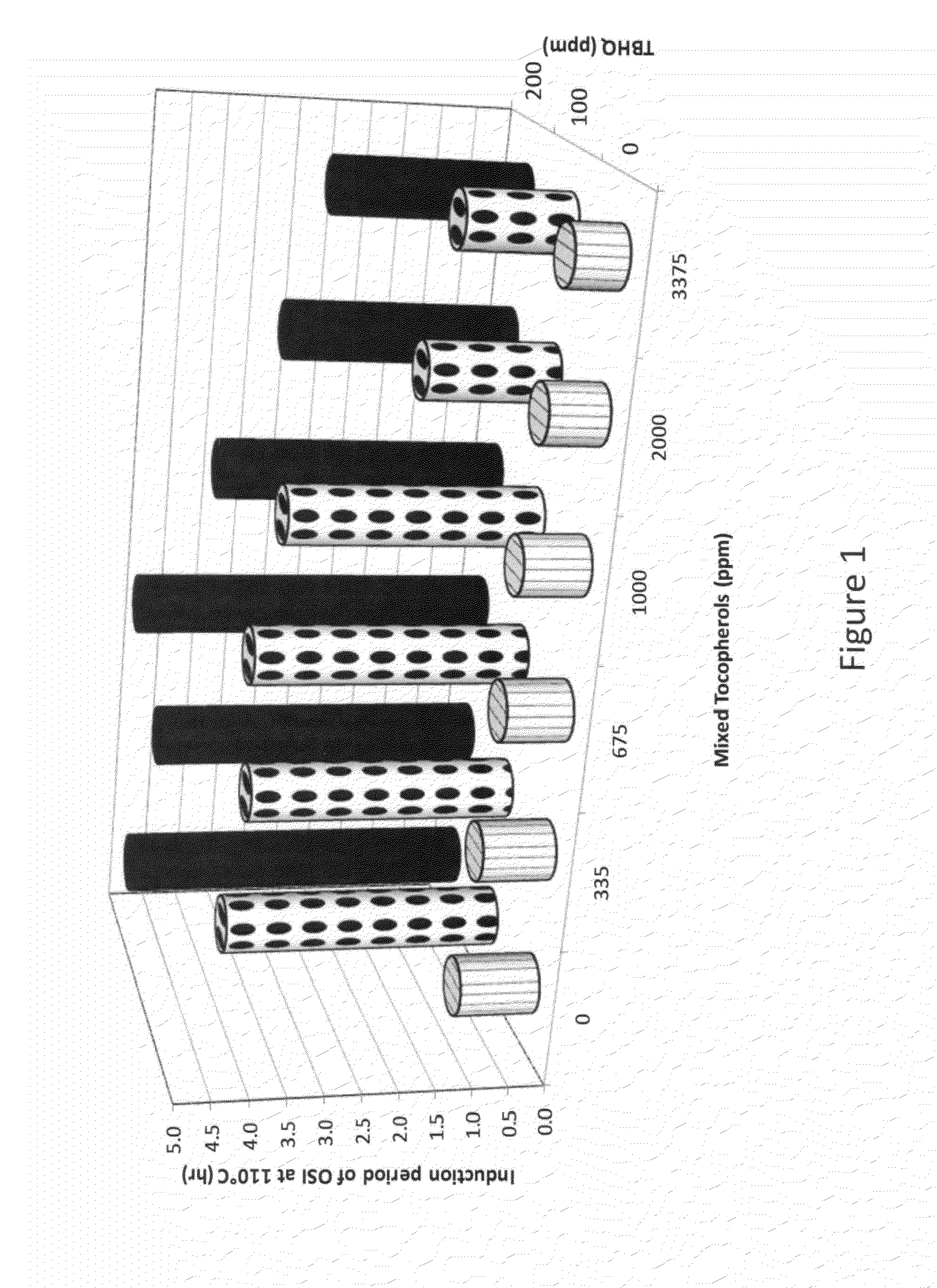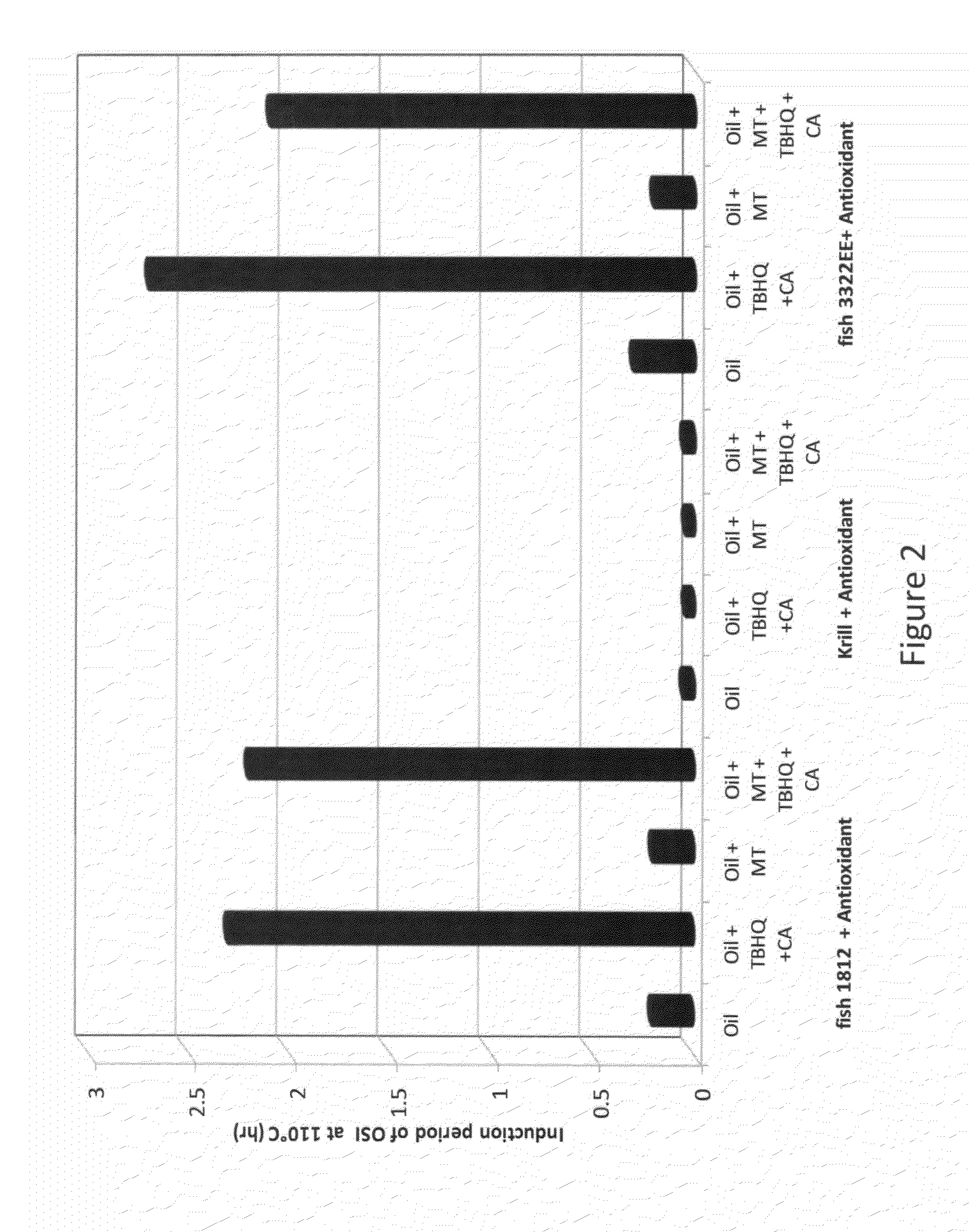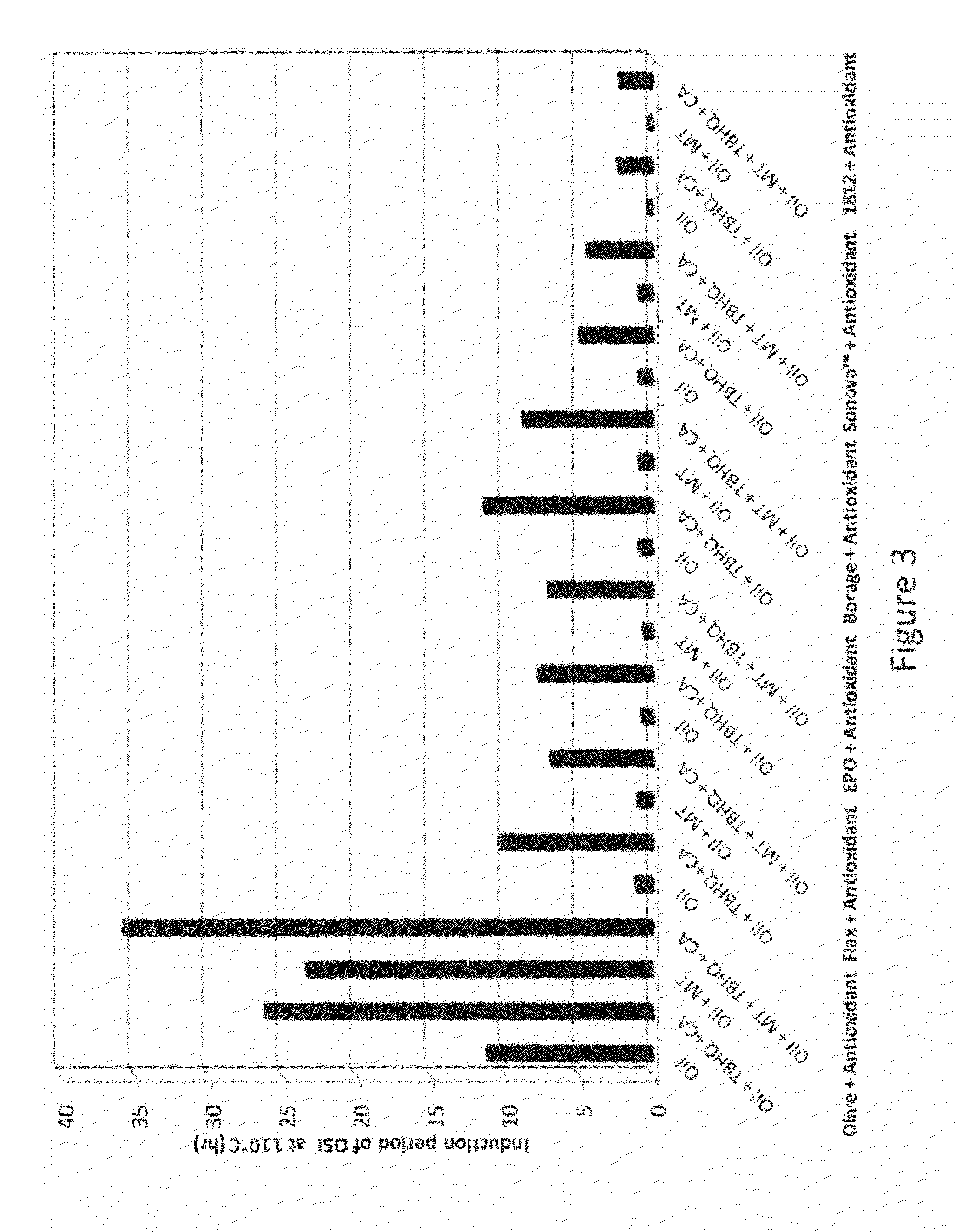Competitive inhibitors of pro-oxidants in edible long chain polyunsaturated triglyceride and ethyl ester oils
a technology of ethyl ester oil and competitive inhibitors, which is applied in the field of edible oils, can solve the problems of reducing the oxidative stability of fatty substances, and increasing the concentration of minor substances during manufacture,
- Summary
- Abstract
- Description
- Claims
- Application Information
AI Technical Summary
Benefits of technology
Problems solved by technology
Method used
Image
Examples
example 1
B. Example 1
Exemplary of Pro-Oxidants in an Edible LC PUFA Oil
[0072]This example illustrates the MT pro-oxidant activity in commercially available edible LC PUFA oil. High-GLA safflower LC PUFA oil (SONOVA™ from Arcadia Biosciences, Inc. of Davis, Calif. U.S.A.) containing about 40% by weight GLA (with oleic safflower triglyceride oil, mixed tocopherols, citric acid, ascorbyl palmitate and rosemary extract) was blended with 335 ppm to 3,375 ppm of a MT pro-oxidant (67.5% mixed tocopherols from Archer Daniels Midland Company of Decatur, Ill. U.S.A.) and 0 ppm to 200 ppm of a TBHQ competitive inhibitor (TENOX 20™ [20% TBHQ+10% CA] from Eastman Chemical Company of Kingspon, Tenn. U.S.A.).
[0073]Referring to FIG. 1 (following the mixed tocopherol primary vertical axis only), further increasing the concentration of MT (as the oil already contains MT) in the high-GLA safflower LC PUFA oil exhibited a MT pro-oxidant effect. Increasing MT pro-oxidant concentration increased the rate of oxida...
example 2
C. Example 2
Exemplary Inhibition of Pro-Oxidants in Different Types of Edible LC PUFA Oils
[0075]This example examines the effect of MT pro-oxidants on the induction period of different types of edible oils containing LC PUFAs and with and without added TBHQ competitive inhibitor.
[0076]The following three oils (manufactured by Bioriginal Food and Science Corp. of Saskatoon, Saskatchewan, Canada):
[0077]fish 18 / 12 (with mixed tocopherols).
[0078]krill (with no added antioxidant), and
[0079]fish 3322EE (with mixed tocopherols)
were blended with and without 675 ppm of MT pro-oxidant and 200 ppm of TBHQ competitive inhibitor (TENOX 20™). The various blends were evaluated by OSI at 110° C. for an induction period.
[0080]In FIG. 2, the pro-oxidant effect is illustrated by the fact that a decrease in the induction period is found when comparing “Oil” to “Oil+MT [pro-oxidant] or “Oil+TBHQ+CA” to “Oil+MT [pro-oxidant]+TBHQ+CA [competitive inhibitor].” The fish 1812 triglyceride and the fish 3322EE...
example 3
D. Example 3
Exemplary Inhibition of Pro-Oxidants in a Single LC PUFA Edible Oil
[0081]This example investigates the effect on the induction period when adding a TBHQ competitive inhibitor to various edible triglyceride oils containing varying LC PUFA compositions and with and without added MT pro-oxidants.
[0082]Six commonly used edible LC PUFA oils (manufactured by Bioriginal Food and Science Corp. of Saskatoon, Saskatchewan, Canada):[0083]olive (with no added antioxidants).[0084]flax (with rosemary extract, mixed tocopherols, ascorbyl palmitate and citric acid),[0085]EPO (with added antioxidants),[0086]borage (with no added antioxidants),[0087]SONOVA™ (with oleic safflower triglyceride oil, mixed tocopherols, citric acid, ascorbyl palmitate and rosemary extract), and[0088]fish 1812 (with mixed tocopherols),
each containing differing LC PUFA distributions, were blended with and without 675 ppm of MT pro-oxidant and with and without the addition of 200 ppm of a TBHQ competitive inhibit...
PUM
 Login to View More
Login to View More Abstract
Description
Claims
Application Information
 Login to View More
Login to View More - R&D
- Intellectual Property
- Life Sciences
- Materials
- Tech Scout
- Unparalleled Data Quality
- Higher Quality Content
- 60% Fewer Hallucinations
Browse by: Latest US Patents, China's latest patents, Technical Efficacy Thesaurus, Application Domain, Technology Topic, Popular Technical Reports.
© 2025 PatSnap. All rights reserved.Legal|Privacy policy|Modern Slavery Act Transparency Statement|Sitemap|About US| Contact US: help@patsnap.com



